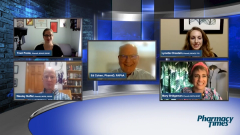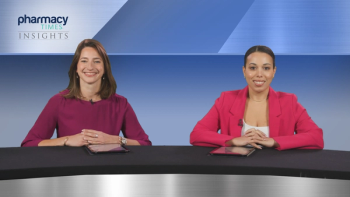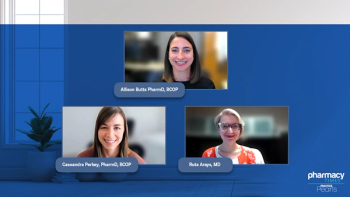
Optimizing Immunization Schedules Among Young Adults
Pharmacists discuss barriers contributing to vaccine reluctance among young adults, including varying degrees of education, accessibility, and convenience.
Episodes in this series

Ed Cohen, PharmD, FAPhA: As of December 2021, the CDC reported that 85% of adults aged 18 years and older had received at least 1 COVID-19 shot, and 15% remained unvaccinated. Among the adults not vaccinated, 75% were under the age of 50 years. Looking at what pharmacists have historically seen, we’ve always done a great job immunizing the older population and have always run into that required/recommended scenario with the 19-to-64-year-old cohort.
We’ve been discovered by a larger group of eligible patients all the way down to the 19-year-old because they’re now seeing the pharmacy as a destination for immunizations. Do you think that we could capitalize on that and continue the success? Having a larger number of patients coming to the pharmacy and looking for that service, do you think that will continue? Do you think we’ve done a good enough job? Or will we still have to market to get those patients to remember that it’s time for the next immunization and to come to the pharmacy?
Wesley Nuffer, PharmD, BCPS, CDCES: I don’t think we’ve done a good enough job, unfortunately. This is a demographic of relatively healthy people. Sometimes they do their own risk-benefit analysis. I’ve talked to a number of people who felt, “I could make it through a COVID-19 illness and I’m not sure that I need that.” It’s ironic that they’ll take better care of their pets. Their pets will be vaccinated, yet they don’t feel the need to do this. It goes back to a lot of the points that Mary made earlier around trust and that relationship with your patients.
There’s a lot of great information out there. There are social media toolkits, a way that to get a COVID-19 vaccine. You can get a text message based on your zip code of where to go, or a phone number to call, or a website to visit. There’s ways that you could quickly meet those needs. But we need to continue to have conversations around the global public health about why we’re all in this together and why it’s an important good idea. We need to counter some of the points that are continuously circulated.
I recently attended a talk where one of the points that stuck with me was, “If you hear something that’s outlandish, don’t repeat it.” That’s something that I had never thought about. Sometimes, at dinner conversation with my friends, I’ll say, “You won’t believe this one.” But you actually give this idea traction when you continue to say the idea, even though you know it isn’t something that’s based in science or something that should be out there. You’re making it more likely that someone else will hear it and perhaps believe it because you’re repeating it. Sometimes the best thing to do is not repeat misinformation and continue to have a variety of resources. Pediatricians have great resources for parents. There are great resources out there, including heartwarming stories of people who got vaccinated and it saved their life.
When we look at the vaccine hesitancy issue, a lot of times we’re trying to combat very personal stories about child illnesses that happened, or we’re debunking the autism myth—some of those things. Some of those parents have very heart-wrenching stories, and we aren’t going to combat those by using hard facts and statistics or ridiculing the person. I try to have real conversations with these individuals. I give them my perspective, I provide them information, and I try not to talk them into something. I try to be an information-giver and hope that sometime later on they’ll reap that harvest that I’ve sown.
Mary Bridgeman, PharmD, BCPS, BCGP: I want to point out that our 19-to-64-year-olds are sometimes described as sandwich generations, sandwiched between providing care for children and providing care for older adults. Sometimes you become the last person in line whom you’re thinking about from a health perspective. Anything that we can do in terms of immunization services to make things a little easier, whether it’s sharing reminders or scheduling subsequent booster doses at the time of an initial appointment, we’ve got an opportunity to do what we can to alleviate some of the burden and the challenge that this generation may be experiencing because of their circumstance in life.
Traci Poole, PharmD, BCACP, BCGP: There are 2 key components for educating this group. One is community immunity. Wes touched on it earlier, that you aren’t just getting vaccinated for yourself. You may be healthy and otherwise totally unaffected if you get COVID-19, but that doesn’t mean someone around you who can’t get vaccinated would be. The idea of community immunity and bringing it down to the local level [is important]. It shocked me a little when I heard that 85% had gotten 1 dose, because in the pockets I’ve been working with, it isn’t that high. Where I’m practicing directly, it’s higher, but it's much lower in some of the other groups that I work with. Talking about that local community immunity is important.
The other thing that we aren’t talking about to this age group is that they’re healthy now, but we don’t know the long-term implications of COVID-19. My mother has MS [multiple sclerosis], so I’ve been following MS research for a very long time. It has now basically been proven that Epstein-Barr virus causes MS. There was a correlation for a long time. In the last few months, this major study came out. Who’s to say what major disease may be linked in the future to having COVID-19? Talking to these people who are young and healthy and work out every day, it’s important to say, “Have you heard of long COVID? Do you know what’s happening to some people who are healthy?” And explaining some of the risks of having the illness itself, even if you do recover.
Lynette Chastain, PharmD, BCACP, TTS: This is the generation of convenience, too. If you tell me it’s 15 minutes, I don’t have 15 minutes, I need it in 5. If you’re in a busy pharmacy, sometimes that’s difficult. Maybe we transition to asking at the drop-off instead of at pickup. Or if you’re in a clinic setting, we had a sign out front that said “Walk-in COVID-19 Vaccines” and business was booming. We got rid of the sign while still offering the vaccines, and it just shut down, because people don’t have that mental cue. Often people are willing to do it, but they’ve been at work, 9 to 5 every day, and they’re home on the weekends. They may not have the opportunity because, like Wes was saying, they aren’t sick and aren’t going to the pharmacy regularly. Think about how to draw convenience. Even though we feel like we’ve seen those signs over and over, there’s probably somebody who will benefit from it if it seems fast and easy.
Transcript edited for clarity.
Newsletter
Stay informed on drug updates, treatment guidelines, and pharmacy practice trends—subscribe to Pharmacy Times for weekly clinical insights.
















































































































































































































